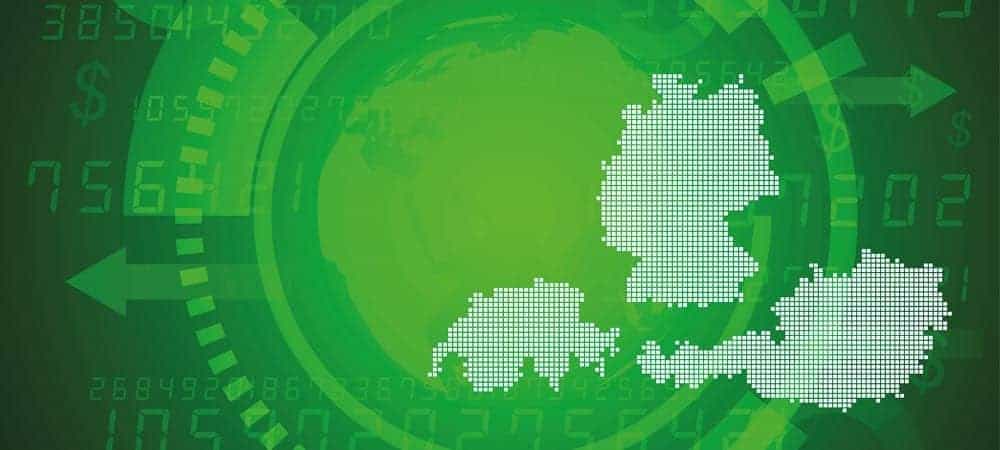Move to S/4 and Hana with Transportation Management


But this also means that you have to decide whether you want the Basic or the Professional version!
Among the biggest hurdles in the transportation management environment - not least in light of increasingly congested roads and scarce availability of heavy or refrigerated transport - are the issues of punctuality and resource utilization.
Only half-loaded trucks are expensive and unsustainable. In general, there are still many blind spots in most logistics chains.
"For example, many companies find it difficult to answer the question of who is the best service provider for them: not just in terms of cost, but also in terms of delivery service metrics"
states Christian Sachse, responsible for SAP Transportation Management and Senior Consultant at logistics specialist Leogistics.
At the same time, new approaches and technologies such as Industry 4.0 and the Internet of Things enable more networking, more transparency and expanded evaluation options, especially in transport management.
This means that more data is available in real time, on the basis of which better decisions can be made proactively and at an early stage. This goes hand in hand with more and more IoT platform connections on which tenders, time slot bookings and tracking & tracing are mapped.
Artificial intelligence and pattern recognition will contribute to the further optimization of processes and paths. So much for the prospects.
There is always air in the planning
In practice, however, most companies still use SAP LE-TRA, a module for transportation management within the SAP ERP system ECC. However, its functionality has not been extended for years.
Parallel to this, the SAP Transportation Management product was created, which has now been around for about ten years. SAP recently announced that there will be no more general support for LE-TRA after 2025.
But besides this pressure, there are a number of sensible reasons to make the move to a current version of Transportation Management, which is fully integrated with S/4.
"There are whole new possibilities on the transportation planning side, including cargo space planning, among other things."
says Christian Sachse.
For example, if 60 partial and full pallets are to be transported by a truck that has 33 Euro pallet spaces, the software calculates whether the pallets can be stacked appropriately.
"A dispatcher in most companies doesn't know that, often this is estimated by the thumb factor"
says Sachse.
This rarely results in optimal truck utilization, he said.
"The whole topic of freight agreement management has a much simpler structure than the condition technology in ERP - SAP has thought of a few things to make master data maintenance and modeling easier for the departments"
says Sachse.
The estimated values are also much more accurate when it comes to transport duration and distances, because geo-information systems can be included. Leogistics relies on HERE Technologies as its partner.
Deployment options for TM
Those who decide to make the switch are spoiled for choice, because there are different scenarios: For example, Business Suite TM can be purchased as a separate SAP product that is operated alongside the ERP and connected via standard interfaces. The latest version TM 9.6 was released to all customers in December 2018.
"However, I would no longer recommend running it this way because it is unfavorable license-wise. Instead, it makes more sense to acquire a TM-S/4-Hana license, even if today both products are still functionally almost congruent."
advises Christian Sachse.
All the integration components alone that exist in the S/4 version would not come in TM 9.6.
"There is a roadmap from SAP for S/4 Supply Chain for Transportation Management, but there is no longer one for SAP Transportation Management - that is, for the business suite variant as a separate product: there you can see where SAP wants to go further"
Sachse points out. Another variant would be to operate the TM embedded in Hana by making transportation planning and settlement part of the S/4 Hana ERP system and fully integrating it in the same way as LE-TRA.
In addition, there is still the option of running a side-by-side version of S/4 Supply Chain for Transportation Management. The "sidecar effect" is the same on the architecture side as the Business Suite variant, but with the new product version.
Often, manufacturing companies themselves also have logistics subsidiaries that are highly integrated with the parent company, which in turn uses the SAP ERP system. The close system integration means that, for example, transport costs can be allocated to product costs here.
"This creates a benefit not only for the logistics subsidiary, but across the Group"
notes the Leogistics expert. In these two cases, the side-by-side version makes sense, he says.
Christian Sachse also sees the operation of Transportation Management in the cloud as a serious, promising alternative. Initially, the software will only be available in a single tenant edition, i.e. practically in the private cloud.
However, SAP also plans to operate the TM in a public cloud in the future. In the view of market researchers, this is where the future of application software lies. The advantage of a fully comprehensive cloud solution is that data redundancies can be avoided through integration and interfaces are eliminated.
Until now, when data is to be exchanged between different SAP products, document copies have usually been created.
"Another advantage of the cloud is its predictability, because the monthly subscription price is fixed, with maintenance and automatic updates included. However, only limited changes to the source code are possible".
says Sachse.
These are the most important criteria when deciding between Basic and Professional TM. Since LE-TRA was available at no additional cost, Transportation Management now also has a version included in S/4 for which no further license fees are incurred.
This Basic variant actually includes the full product, but there is a functionality limitation. Although the transport cost accounting and calculation can be used almost completely, the transport planning - as already with LE-TRA - is very limited.
"For carriers with their own fleet and drivers, it therefore makes sense to use the Professional variant"
reports Christian Sachse.
This optimization functionality answers questions such as: Can all packages/pallets be loaded into the vehicle, taking stacking into account? Which carrier is the most favorable for the respective tour based on all freight agreements? What is the best way to combine different transport requirements on tours?
Clarification management is also included to be able to come to an agreement with the carrier in the event of discrepancies in the credit note-based settlement process. In the Professional version, transportation planning can also be carried out with sales orders, purchase orders or stock transfer orders from the SAP system.
Switching to S/4 and Advanced?
However, the division into Basic and Professional, often called "Advanced", also exists in other products.
"The disadvantage is that only the Professional versions can be interconnected, otherwise the interfaces are missing"
the Leogistics expert points out.
The effort required for a complete S/4 Hana migration including TM can vary greatly. In one of the world's largest S/4 Hana transformations, the service provider CBS, parent company of Leogistics, helped the heating technology group Viessmann to successfully complete the migration in just a few months.
In the process, 23 production companies and 120 sales offices worldwide were migrated to the new system release 1809. CBS developed a "s.m.a.r.t. approach" strategy for this. Together, CBS and Leogistics offer S/4 Hana readiness analyses to determine the best possible migration strategy for a company.
First of all, it must always be decided whether the migration is to be carried out according to the greenfield, brownfield or bluefield approach. TM is of course only a comparatively small part of this, but the following applies: Transportation Management can only be migrated Greenfield, because with LE-TRA the database and the product are completely different.
"That's why migrating transportation logistics to S/4 is always a good way to think about processes to optimize them"
Sachse notes.
Cloud strategy and platform
The roadmap shows a clear cloud strategy. With the cloud platform Logistics Business Network, there is an approach for handling orders and tenders and for automating the exchange between shippers and carriers.
The next few years will show whether the platform can establish itself. The topic of blockchain is also included in the roadmap, with container content data presumably to be exchanged via blockchain.
Sachse considers the increasing use of machine learning to be important. Today, automated planning only works if the master data - and in particular the rules and regulations - are maintained beforehand.
"But I can definitely imagine that in the future, transportation planning will have a 'recording mode' where I plan manually for a few weeks and the required master data is derived directly from that, and then I can continue with automated planning"
says Sachse.





